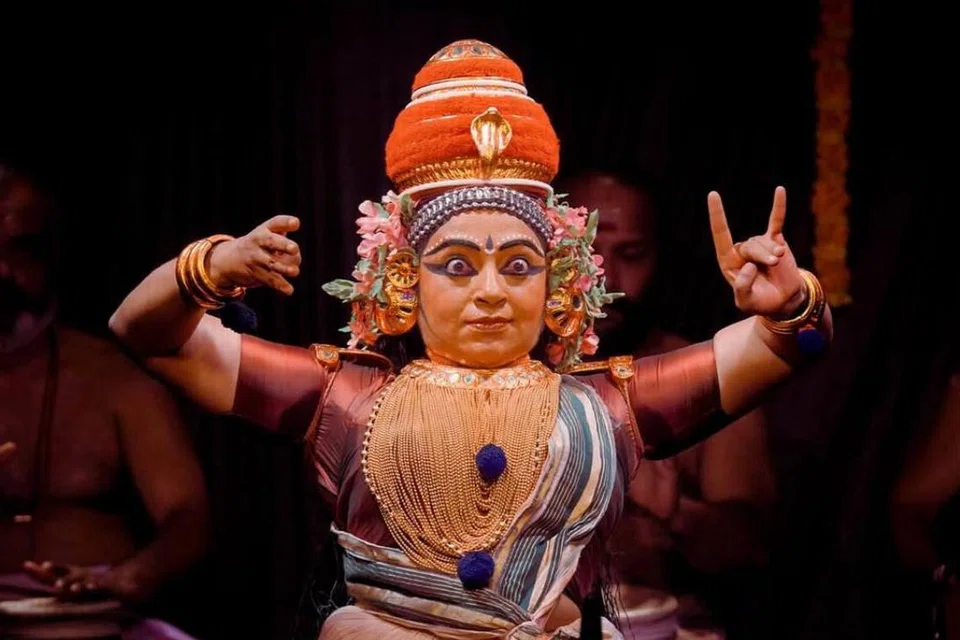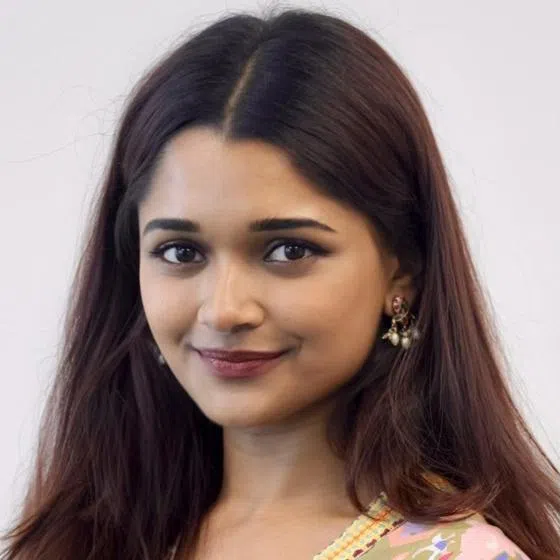Something disorienting happens when you watch Ms Kapila Venu perform – it feels like your sense of time is coming apart in your hands. The ancient unspools into the intimate, and a two-thousand-year-old performance art begins to look like a reckoning with the self.
She is one of the most acclaimed living practitioners of Kutiyattam, the oldest surviving form of Sanskrit theatre from Kerala. Turns out, Ms Kapila Venu, 43, may also be among the last Kutiyattam artists who “live” with their art in an almost anachronistic way. She dwells in the same compound as her stage musicians in Kerala, and rehearses with them nearly every day.
She recently travelled with these artists to present a Kutiyattam performance in Singapore for Samskriti, a programme organised by Kalpavriksha Fine Arts which included a panel discussion, workshops, and live performances from Jul 19 to Aug 17.
Ms Kapila was exposed to the performing arts before she could write her name. Rightfully so, as she was born into the form. Her father, Mr G. Venu is a Kutiyattam performer while her mother, Mdm Nirmala Paniker, a Mohiniyattam dancer. She grew up in a house where her bedtime stories were temple chants and her first audience, a circle of gods.
“I was exposed to many traditional art forms at a very young age,” she said. By age seven, she was learning the rigorous score of Kutiyattam. “I had to choose between academics and art, and I chose early.”
Kutiyattam is exacting, she said – “You train your eyes to move independently and your breath to signal emotion.” In the traditional version, one performs for hours, barefoot on temple stages, reciting Sanskrit verses that were once off-limits to women and those outside of the priestly caste, but not anymore.
“There still are remnants of caste and gender hierarchies. I think it would be very irresponsible not to address these in my performance. Art has to keep evolving according to changing values,” she added. To combat this, she said, “one can reimagine those characters within the traditional repertoire, because Kutiyattam gives a lot of scope for interpretation and improvisation.”
Ms Kapila has not known a life devoid of Kutiyattam. She practices every day, in a home that doubles as a rehearsal space, always with live musicians. “We don’t use recorded music,” she said, which allows the artists to be more present. In an era increasingly defined by speed, the theatre of Ms Kapila Venu moves deliberately slow. Kutiyattam, she said, stretches and embodies the present. “We take time to go deep and explore the various characters so that the audience can feel the emotion and arc of the character.”
What makes her singular and maybe even revolutionary is how she uses a deeply patriarchal form to perform otherwise. Her favourite character to portray is Gandhari (Uruvagam) from the Mahabharata. “I feel for that character very much. Especially as a mother, in these days and times when war is omnipresent, I resonate with that feeling of wanting to protect your child.”
Ms Kapila shared that becoming a mother has significantly deepened her craft. “I became more mindful, more empathetic toward everything,” she said, adding that she is even more careful now about how she brings children into the world of Kutiyattam, as potential custodians of the form.
A common commentary on Ms Kapila’s performances is that she often seems to have transcended physical space. “I don’t go into a trance,” she said. “A good artist is always fully aware. You never forget the audience is there because that is who you are performing for.” Maybe this refusal to forget is the clearest thread in Ms Kapila’s work. Be it the roots of Kutiyattam, what it means to be a woman in a space that was historically closed to women or the political nature of art. “All art is political,” she said, “whether you choose to make it visible or not.”
In her free time, Ms Kapila listens to metal, Tracy Chapman, and Palestinian music. She reads voraciously. She’s working on pieces in Tamil, reclaiming language and form. Her hopes for Kutiyattam include better curation and more respect for the architecture of attention.
“I think the future of Kutiyattam is really hopeful. What the world can contribute towards the art of Kutiyattam is to think of the exact unique conditions in which it needs to be preserved and presented, as well as understand its aesthetics, its origins, and purpose,” Ms Kapila said.


